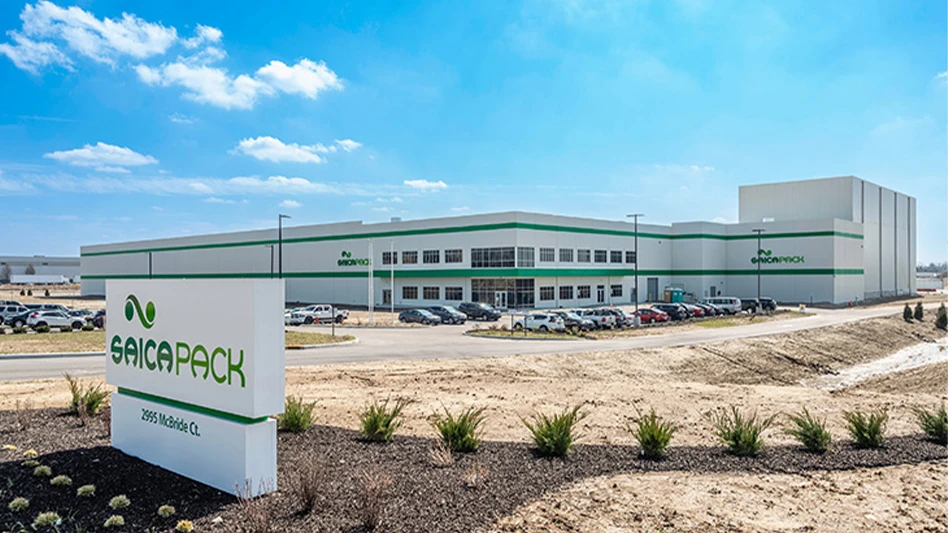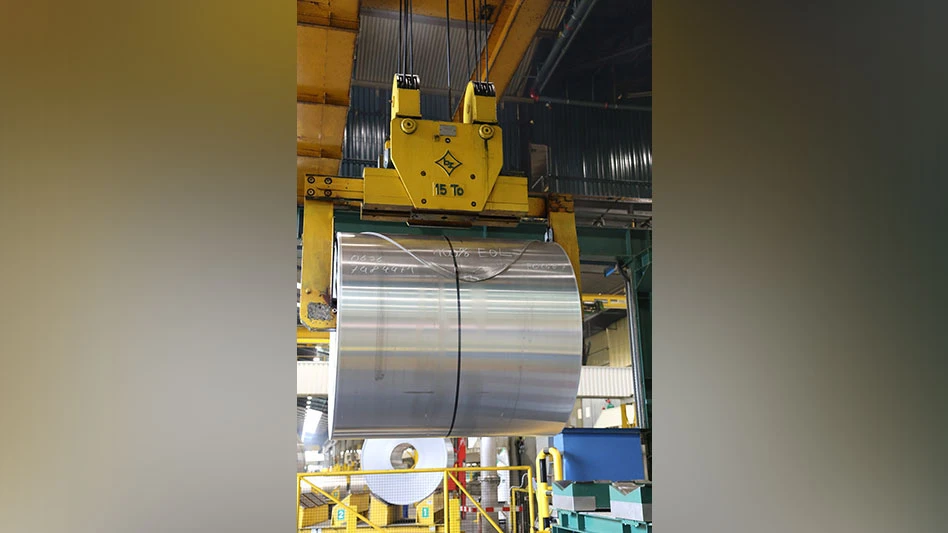It is important for scrap yard managers to be able to track the separation performance of the yard over time. This makes it easier to monitor losses and determine if there may be problems with the processing circuit. Metal losses also can be used to justify adding new separation equipment, which is a decision that must be made carefully in tough economic times.
The calculations illustrated in this article can help operators make better decisions regarding equipment purchases and scrap sales and can be used to facilitate communication regarding efficiency to employees and other scrap yards.
Yield
Figure 1 shows a sample of material that has been fed into an eddy current separator. Although the ratio of metals to waste is above average, this hypothetical sample has been chosen to simplify calculations.
This feed sample contains 12 blocks of equal weight. The four silver blocks are pure aluminium, the four red-orange blocks are pure copper, and the four blue blocks are plastic. When separated, the blocks shown on the yellow background go under the splitter of the eddy current separator, in a negative sort, and are sent to a landfill, while the blocks on the aqua background go over the splitter (positive sort) and report to the zorba product.
The most common measure of separation performance is yield. Yield, as shown in Figure 1, is simply the mass percentage of feed that ends up in a separated product. Most commonly, yield is used to describe the fraction that is more valuable (i.e., zorba yield). In Figure 1, zorba yield is indicated as the area within the aqua background. Note that this area contains both desirable metals and unwanted misplaced plastic. Because the blocks in the diagram are equal in weight, the yield for both the recovered and rejected fractions is 50%.
A yield describing the material that will be sold as zorba is calculated by dividing the mass of the concentrated material, in this case six blocks, by the mass of the feed materials, in this case 12 blocks, then multiplying the quotient (0.5) by 100. This results in the yield percentage: 50%.
A sudden change in yield can be caused by changes in feed composition or by an equipment malfunction that impacts separation performance.

Recovery and rejection
Recovery and rejection calculations are used to show the distribution of a specific component present in the feed between the separated products. These parameters are important for assessing the overall performance of the process.
For process engineers, both recovery and rejection measurements are better indicators of separation performance than yield or the metals content in the process waste. For example, the valuable metal blocks that have been “recovered” are shown in the aqua area on Figure 2.
Zorba recovery, which is the percentage of recovered metals out of the total metals in the feed, is calculated as the mass of zorba metals in the concentrate (here, shown as five blocks), divided by the mass of zorba metals in the feed (eight blocks), multiplied by 100. Thus, for every 100 tons of metals sent to the separator, 62 tons were recovered as valuable zorba product. The remaining 38 tons were lost to the waste stream.
The 38 tons of metals that were lost can be described as rejected, also depicted in Figure 2. Rejection is the opposite of recovery. Rejection is normally used to quantify the percentage of a specific type of material that reported to the waste stream in a separation process. In the current example, the blocks in the yellow area represent those that reported to the waste stream. As such, zorba metals rejection percentage is calculated as the mass of zorba metals in the tailings divided by the mass of zorba metals in the feed, multiplied by 100.
In this case the metals rejection is shown as the yellow area in both the pie chart and the material diagram. The shaded area, which represents plastic, is not used in the calculation for rejection or recovery of metals. However, rejection also can be used to describe the amount of plastic that ends up in the zorba and would help to describe the amount of contamination in the product. Therefore, designing a process with a higher plastic rejection could mean a higher grade zorba product. Recovery and rejection also are useful for determining metal losses per hour, which then can be converted into revenue losses using current market prices.

Grade
Grade describes the amount of a specific constituent present in a scrap sample, i.e., product purity. The grade of a pile of scrap is important for both sales and processing calculations. Only the blocks in the nonshaded, aqua concentrate region in Figure 3 are used to calculate the grade of the zorba.
Of the nonshaded blocks, 50% of them are aluminium, making the grade of the zorba produced in this process 50% aluminium. If indicated, the grade also can describe the overall metals content, which is the sum of the grade of aluminium and the grade of copper. Aluminium grade, for example, is calculated by dividing the mass of aluminium in the concentrate (three blocks) by the total mass of the concentrate (six blocks comprising aluminium, copper and plastic), then multiplying by 100.
Grade also can describe the metal content in the feed and waste streams from a separator. Therefore, waste grade is also an important parameter for monitoring metal losses.
Separation efficiency
Separation efficiency is a technical metric that shows the overall effectiveness of separation. For the current example, separation efficiency would typically be reported as the recovery of metals in the zorba product minus the recovery of plastic in the zorba product. Separation efficiency, depicted in Figure 4, can be calculated by subtracting plastic recovery from zorba metals recovery, in this case 63% (5 blocks out of 8) minus 25% (1 block out of 4), resulting in a separation efficiency of 38%.
Yield and recovery
Yield’s simple calculation does not involve measuring grade and is not the best indicator of separation performance. Since recovery and rejection describe the percent of metals that reach the customer, they are much better indicators of performance and whether improvements can be made.
In the example shown in Figure 5, the feed composition and how the material splits changes; yet the yield stays the same, indicating why yield is a poor indicator of separation performance. As shown in the pie chart, the yield for the changed feed is still 50%. However, the metals recovery has dropped from 62% to 57% (as shown in Figure 6), and the overall separation efficiency has dropped from 38% to 17%.
Copper was the only metal where recovery declined: dropping from 50% to 33%. With copper being the more valuable metal, this drop in recovery would create a problem for the processor.
If only yield is measured and grade measurements are not completed consistently, the processor may not be aware of the drop in performance. This drop in recovery also can be an indicator of a change in shape of the material, possibly indicating poor shredder performance, a problem with sizing or a problem with the separators themselves.
A 5% loss in metals recovery can have a large effect over time. If a scrap yard runs only ¼ ton per hour of copper through eddy current separators, and the copper recovery drops by 17%, that is equal to losing 476,000 pounds of copper yearly if the separators are operated 16 hours per day for 50 weeks per year.
Knowing these numbers and how to use them alerts the processor where to look to get every last penny out of the scrap.
Scott Koermer is a process engineer at Virginia Polytechnic Institute and State University. Through support provided by Eriez, Erie, Pennsylvania, Scott has been involved in metals recycling research, including the characterization and analysis of eddy current separators, circuits and the Eriez RCS system. He can be reached at skoermervt@gmail.com.
Get curated news on YOUR industry.
Enter your email to receive our newsletters.
Latest from Recycling Today
- Green Cubes unveils forklift battery line
- Rebar association points to trade turmoil
- LumiCup offers single-use plastic alternative
- European project yields recycled-content ABS
- ICM to host colocated events in Shanghai
- Astera runs into NIMBY concerns in Colorado
- ReMA opposes European efforts seeking export restrictions for recyclables
- Fresh Perspective: Raj Bagaria






